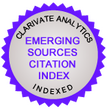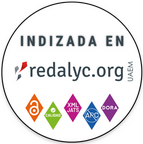DIMENSIONS OF AN ACTION LEARNING SYSTEM FOR HIGHER EDUCATION IN MANAGEMENT
DOI:
https://doi.org/10.13058/raep.2012.v13n1.97Keywords:
action learning, management education, learning styles.Abstract
This paper aims to outline the theoretical foundations of an Action Learning System for the higher education field, specifically in management. The proposition of the foundations of the system has emerged from educational institutions’ need to create a classroom and virtual environment of learning that help teachers and students in a more meaningful learning process with physical and technological resources appropriate to the context of the contemporary labor market. The system was proposed based on the theoretical perspectives of self-directed learning, transformative learning and action learning and its context to the higher education field for management. The action learning system covers five connected dimensions: 1) the learning environment of management education, 2) teachers’ and students’
learning styles, 3) the teacher and student experience, 4) the teaching-in-action strategies, and, 5) reflection in action. Despite the challenges to implement the system in the teaching of management, it is considered that the proposed system has the capacity to increase the possibilities of connection between the theory provided in a management education and real-world, professional application within organizations, which contributes to a more meaningful
and transformative learning process.
Downloads
Downloads
Published
How to Cite
Issue
Section
License
By publishing a manuscript in the journal Administração: Ensino e Pesquisa (RAEP), the authors declare that the work is of their exclusive authorship and therefore assume full responsibility for its content. The authors grant RAEP a non-exclusive rights license to use the work in the following ways:
(1) Sell and / or distribute the work in hard copies or electronic format.
(2) Distribute parts of the work as a whole to promote the journal through the internet and other digital and printed media.
(3) Record and reproduce the work in any format, including digital media.
Authors and readers are permitted to share the material, use it in classes, for presentations and also for other purposes, and to create new knowledge based on any RAEP publication, as long as the due credit is attributed to the original work and the respective author(s), through citations, references, and other means.
The journal adopts preventive measures to identify plagiarism using software designed for this purpose.
RAEP does not charge authors for the article submission nor for the publishing of approved articles.
In line with the journal's policies, each published article will be given a Creative Commons CC-BY 4.0 license.










